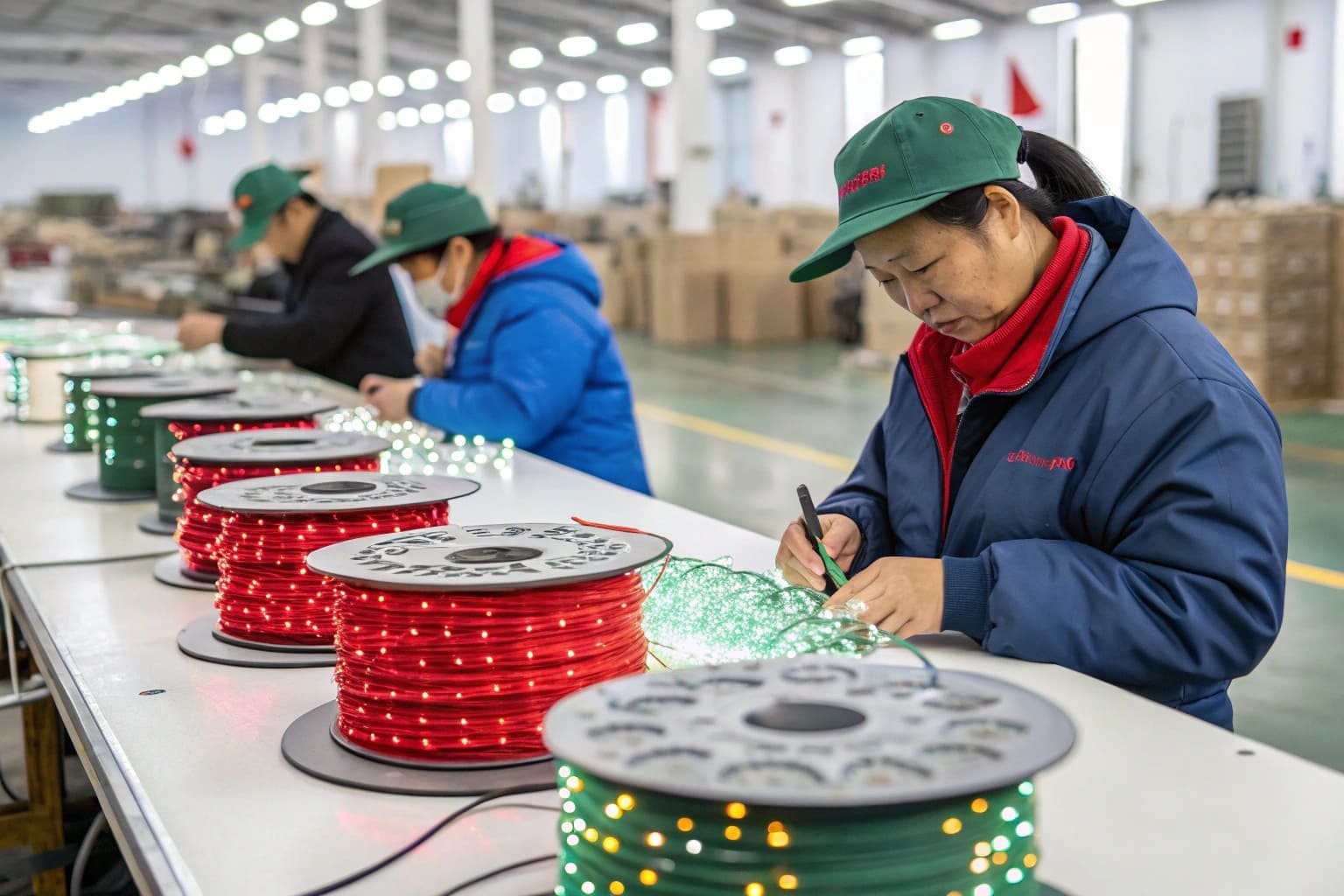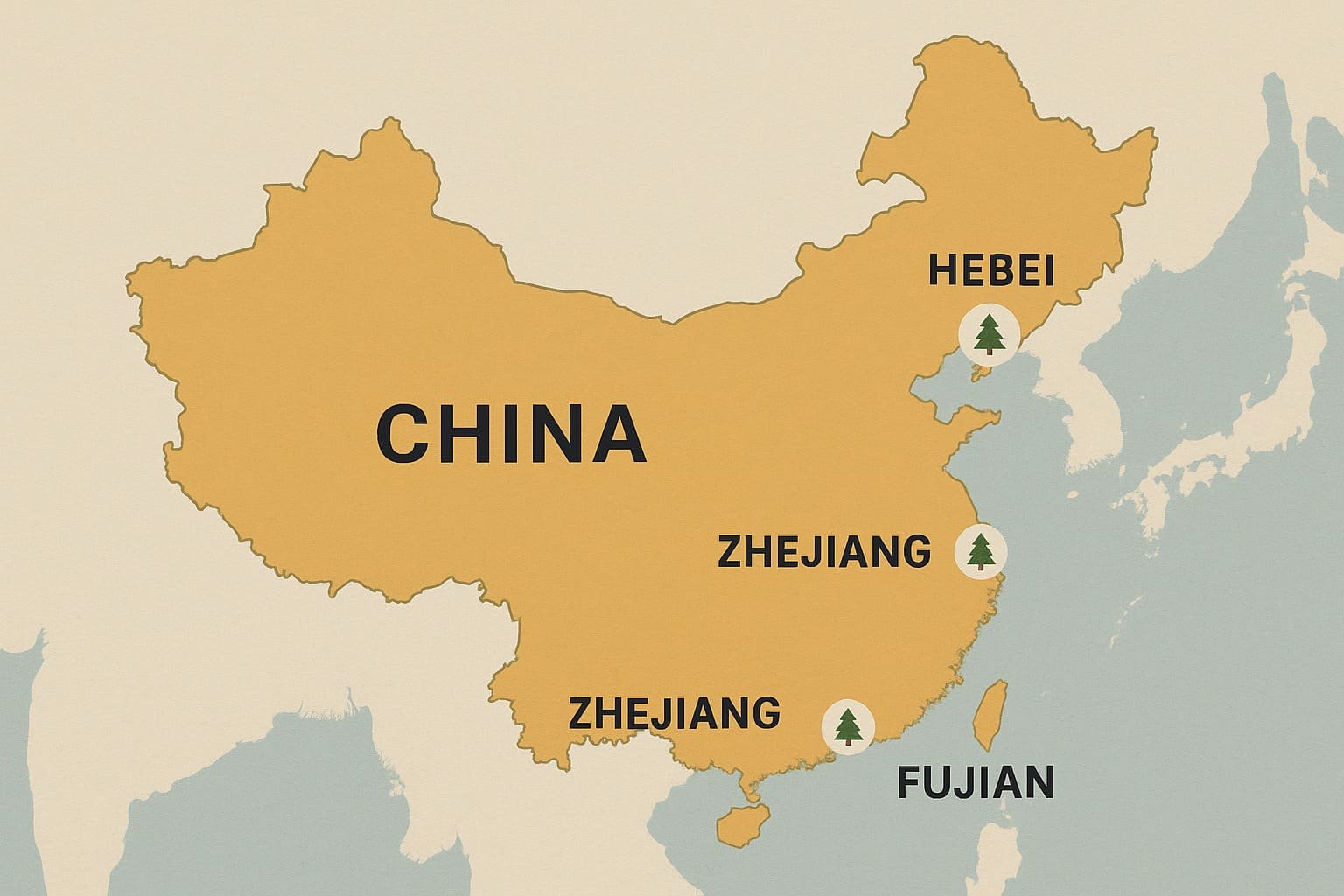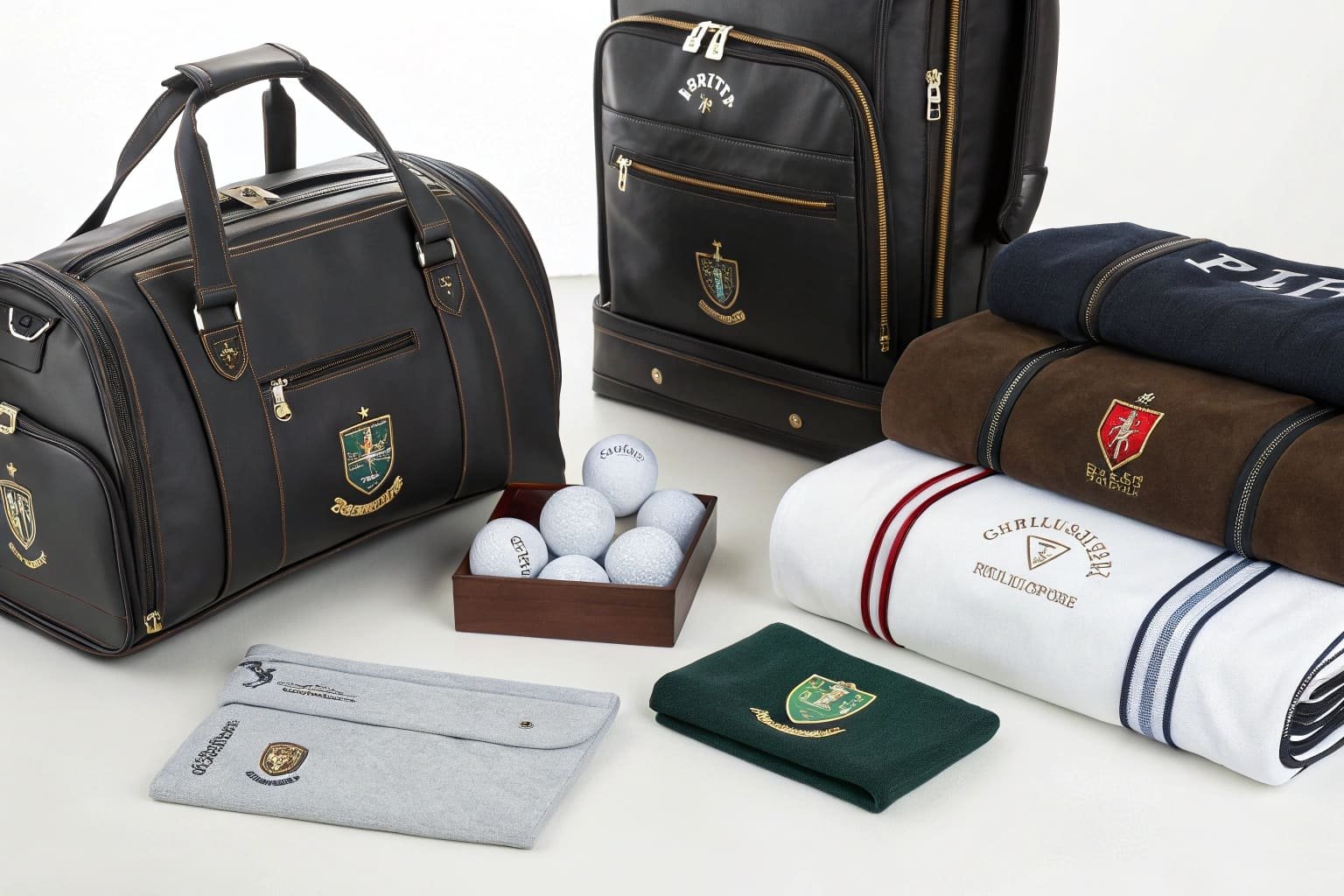People are gradually returning to their normal life as the effects of COVID-19 fade. The trend of home cooking, on the other hand, continues. According to research, the demand for kitchenware goes up significantly as a result of the Pandemic. Some products, such as unique kitchen wares and eco-friendly items, are becoming popular research keywords, considering the following Google Trends graphs on search popularity of the keyword Bamboo kitchen as below.
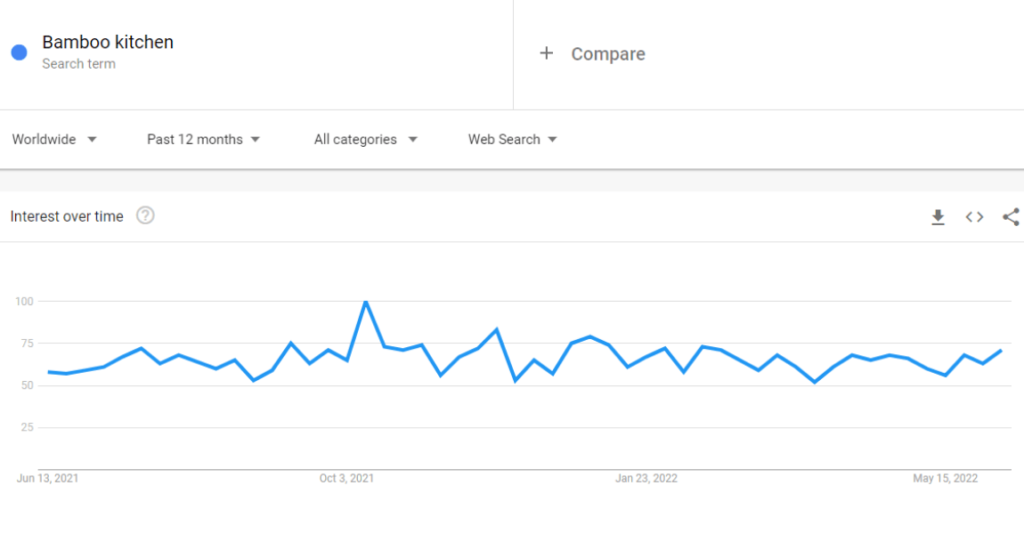
The search appears to have remained high in the last year, indicating that people are becoming increasingly interested in bamboo kitchen utensils and tableware. In this article, we will discuss everything you need to know about Bamboo Fiber Kitchen Products.
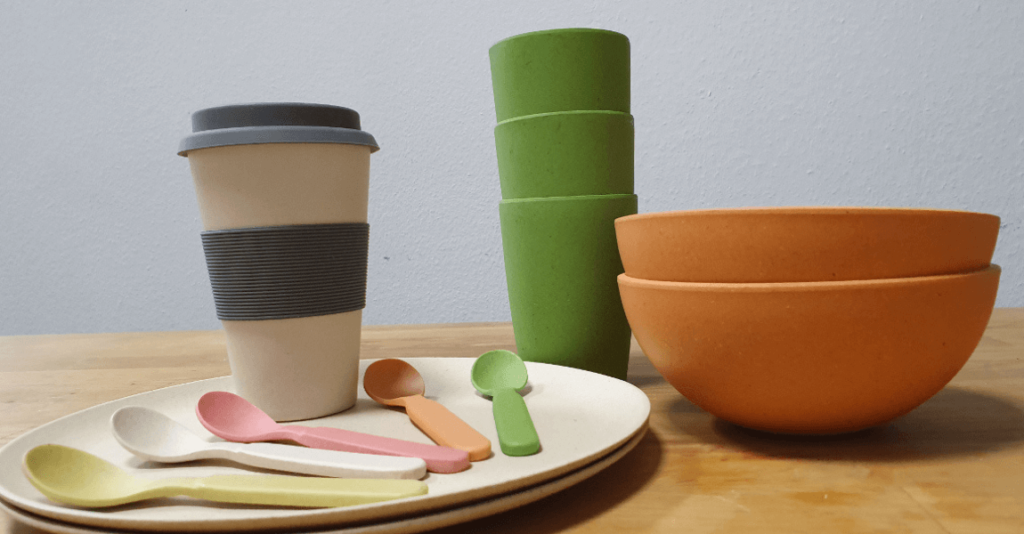
#1. Material Composition of Bamboo Fiber Products
What is bamboo fiber tableware?
Bamboo fiber tableware, as the name implies, is tableware made of bamboo fiber, which is a regenerated fiber made from bamboo through a special high-tech process of extracting cellulose from bamboo, and making glue and spinning.
It is included in the list of biomass fibers. Bamboo, wheat straw, rice straw, and corn straw are examples of common biomass fibers. It is a renewable energy that is both cost-effective and environmentally friendly.
However, In order to improve the performance of natural materials, a large number of adhesives, waterproofing agents, and oil repellents must be added during the manufacturing process.
Melamine resin, the most commonly used adhesive, plays a critical role in biomass tableware. Melamine resin, which is added to bamboo fiber tableware, accounts for nearly half of the total, even more than bamboo fiber.
As a result, bamboo fiber tableware contains not only “pure” natural bamboo fiber, but also more melamine than bamboo fiber as adhesive. This type of tableware is actually “melamine tableware” rather than “bamboo fiber tableware”.
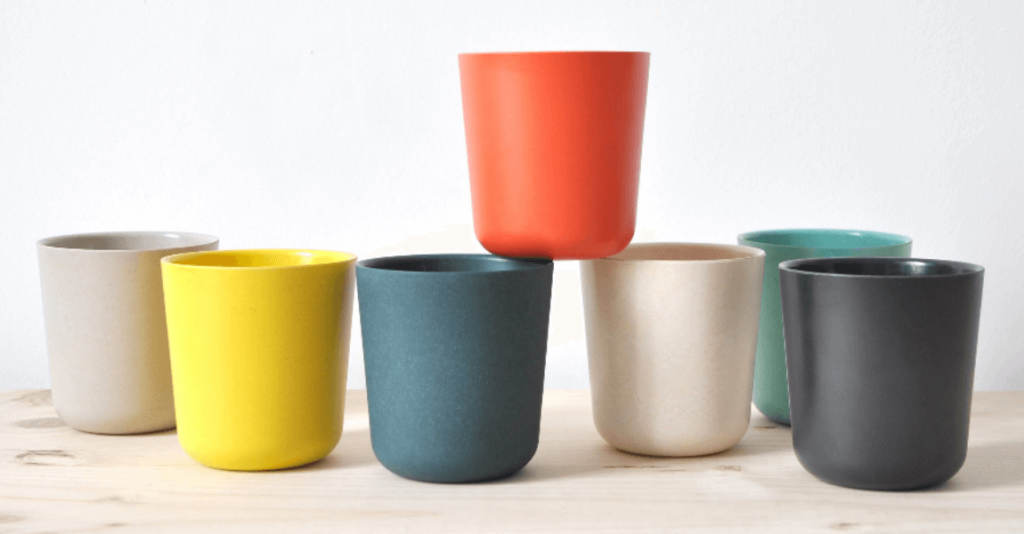
#2. Health Concerns about Bamboo Fiber
As previously stated, bamboo fiber tableware is mostly made of melamine, with a small amount of bamboo fiber.
Melamine tableware is poisonous and tasteless, and can withstand temperatures ranging from -30℃ to + 120℃(-86℉to +248℉), but it cannot be microwaved. Melamine will precipitate formaldehyde and melamine at temperatures above 120℃ or in strongly acid conditions.
The EU published a discussion report of experts on food contact materials on June 27th, 2019. According to the report, more and more plastic products containing bamboo and/or other “natural” substances have appeared in the EU market in recent years. They are typically made of melamine plastic as the main structural component, so they look and function similarly to melamine tableware.
The report makes it clear that (EU)NO 10/2011 prohibits the use of chopped bamboo, bamboo powder, corn starch, and other similar substances as additives in plastic materials and products. Therefore, Bamboo fiber tableware is banned in many EU countries.
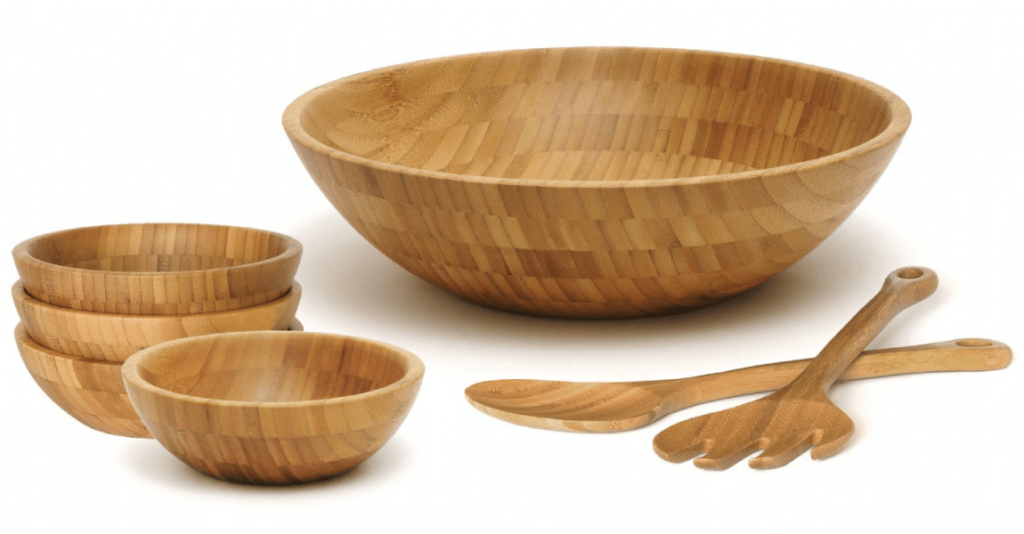
#3. Is It Possible to Make a Salad Bowl made of Genuine Bamboo?
Bamboo-made kitchenware has a long history. People in ancient Asia used bamboo cooking shovels, chopsticks, spoons, streamers, and tube rice cookers. There are now many great bamboo serving bowls available under the brands AMACRAFTS, LovaHome, Totally Bamboo, IKEA, and HM-tech.
AMACRAFTS Bamboo Bowls, for example, are said to be masterfully hand-crafted by skilled artisans in rural areas in Vietnam – the Base of Seagrass, Woods, Rattan, Water hyacinth, and bamboo craftsmanship for the past 200 years – nestled 110 Kilometers outside of Hanoi capital city.
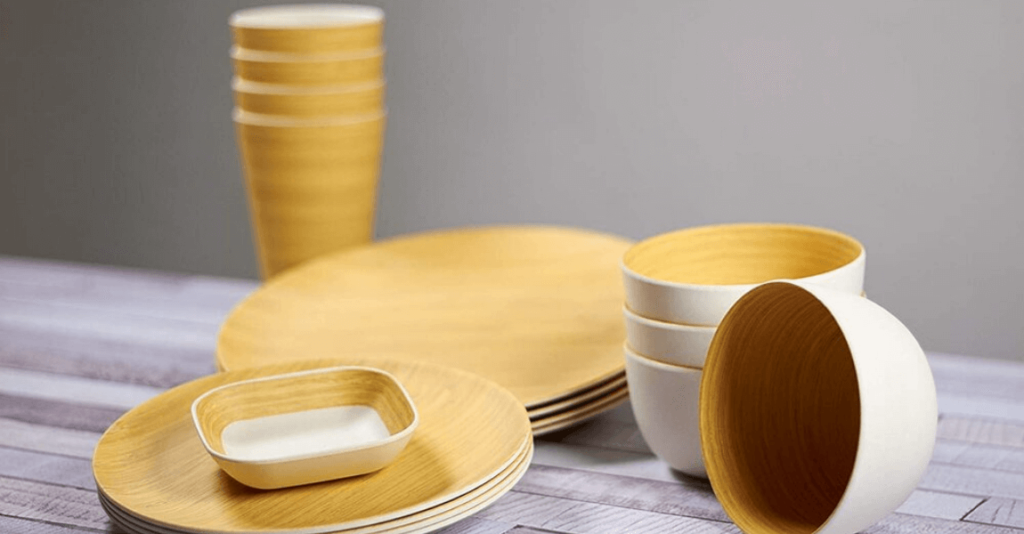
#4. Price Differences between Bamboo Fiber Bowls and real Bamboo Bowls
A variety of the best-selling bamboo serving bowls on the market sell for between $13 and $119, while the bamboo fiber bowls cost much less, around $11. The price difference is significant, and we should keep this in mind when selecting bamboo tableware as promotional gifts.
#5. Difference between wood tableware and bamboo tableware
As shown below, we compare features of the following similar products:
| items | Bamboo fiber wares | Real Bamboo wares | Wood wares |
| cost | low | high | high |
| Working temperature | -30℃ to + 120℃ | no limit | no limit |
| Used in Oven, microwave oven | no | no | No |
| weight | light | light | light |
| Deformation | Hard to deform | Deform slight | Deform slight |
| flammable | no | yes | yes |
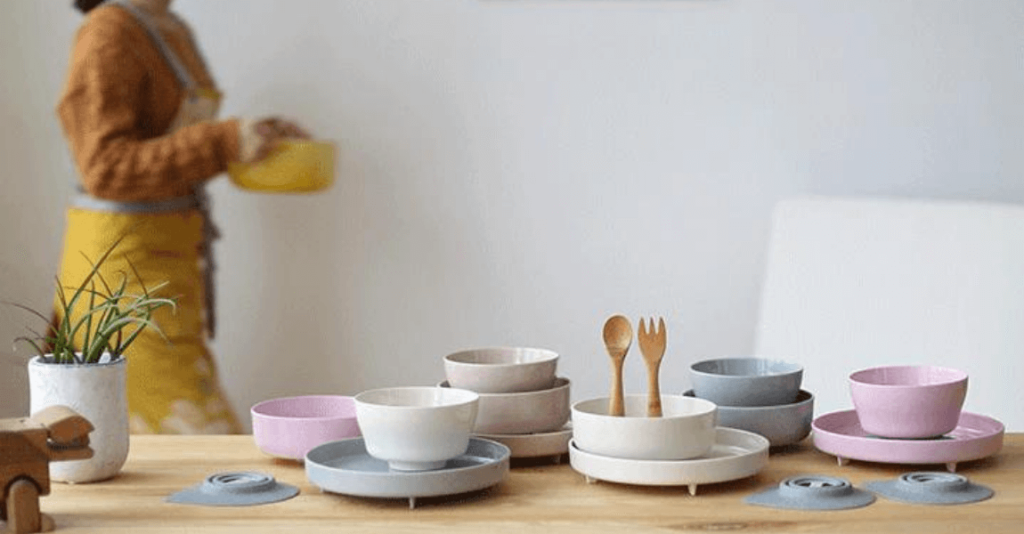
#6. How to Choose bamboo tableware as promotional items?
Bamboo fiber tableware is very light, with only a slight and moderate weight sense; The surface can be printed with exquisite and bright patterns, and its stable coloring effect can sustain bright color, and high gloss, and not easily peel off. And the texture of the print is excellent, comparable to the elegant beauty of traditional ceramics. Last but not least, its thermal conductivity is relatively low, so even if consumers use it to hold hot food, they will not be burned.
However, melamine tableware, on the other hand, is affected by long-term heat, alkali, grease, and acid, which release harmful substances, and cause its surface to form a layer of brown spot marks, reducing its beauty. So, if there is a crack or color peeling on its surface, it is time to replace it with a new one.
As can be seen from the preceding points, bamboo fiber tableware, also known as melamine tableware due to its material content, has advantages and disadvantages. It can still be given out as an effective promotional product on the non-European market and works safely and usefully between temperatures -30℃ to + 120℃.



